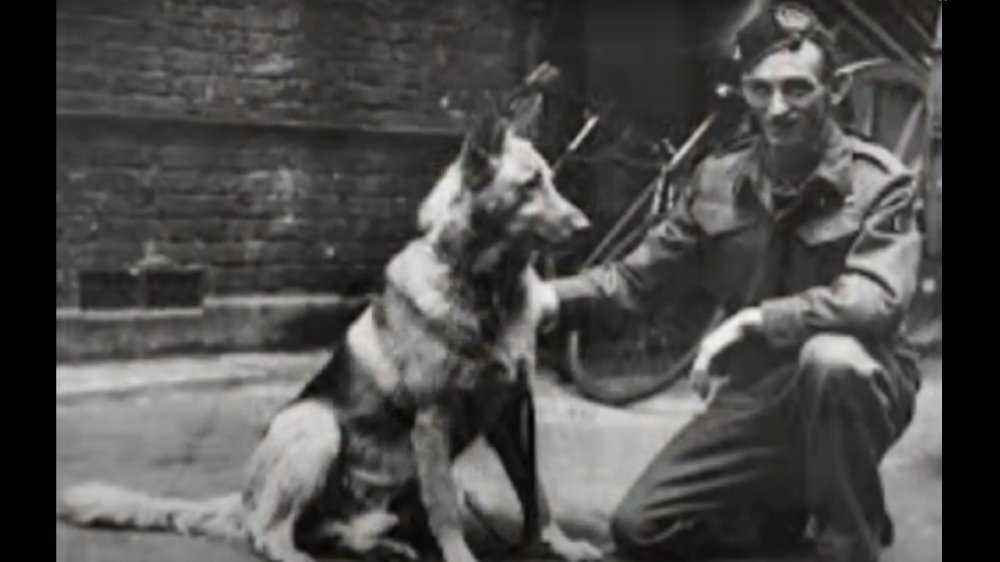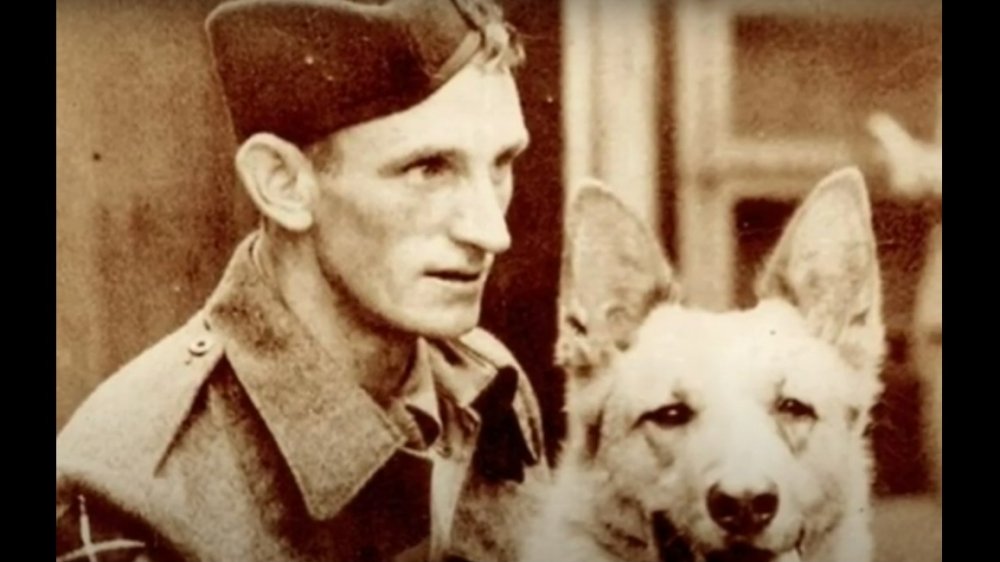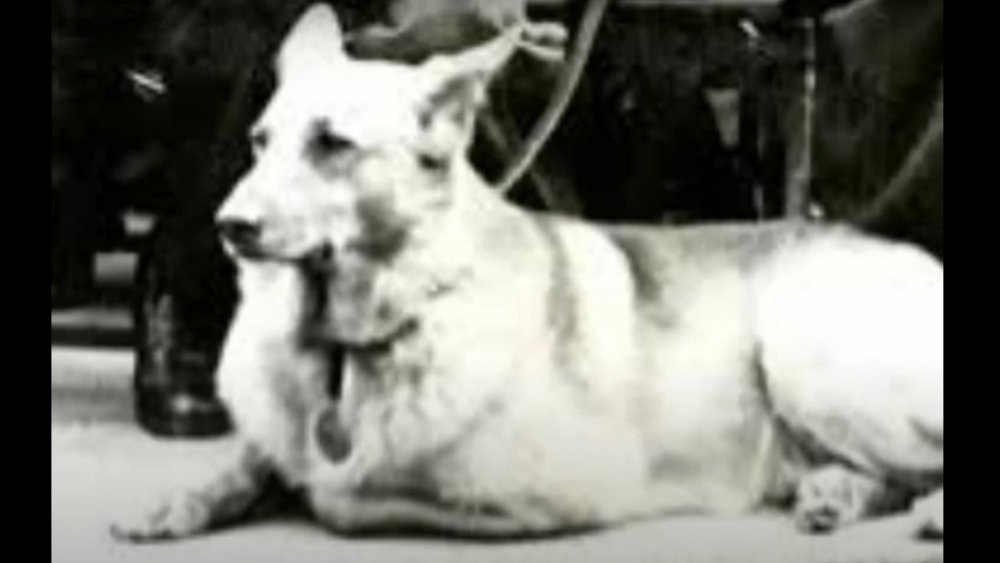The Untold Truth Of Khan The War Dog
You might know them as German Shepherds. Possibly as police dogs. Depending on how old you are (or how much time you spend watching incredibly old TV shows) you'd identify Rin Tin Tin as a prime example of the breed. Maybe Bullet, never as popular as Trigger but still important for the TV world of Roy Rogers. And depending where you live (in England, not to put too fine a point on it), you might know them as Alsatians, rather than German Shepherds. They're all the same dog, says Pets World — a wildly popular breed after Rin Tin Tin emerged from World War I to become a movie star.
The American Kennel Club tells us that male German Shepherds will grow to about two feet in height at the shoulder and weigh in around 90 pounds. They're famous for their "character": "loyalty, courage, confidence, the ability to learn commands for many tasks, and the willingness to put their life on the line in defense of loved ones." Those are pretty good descriptors for the Alsatian known as Khan. In June 1941, Britain was well into World War II when the puppy was brought home to a delighted seven-year-old boy, Barrie Railton.
Lance Corporal Muldoon owed his life to Khan
There were food shortages in Britain (and elsewhere) at the time, and when the government asked for dogs to be used in the war effort, Khan was reluctantly volunteered by his human, as the McCreath Family website tells the story.
After training, Khan became War Dog 147, specializing in locating explosives and assigned to a Scottish regiment, the Cameronians, where he was paired with Lance Corporal Jimmy Muldoon. Their unit was sent into battle on November 3, 1944, in a nighttime amphibious operation, says the BBC. German mortar fire capsized their boat as they approached the shore. Khan and Muldoon both survived the explosion, and Khan made it to shore. Muldoon was not only still in the water with all of his gear, but he couldn't swim.
Khan returned for Muldoon, gripping the soldier by his uniform until Muldoon could grab Khan's collar. The dog helped Muldoon reach the shore, where they both collapsed, exhausted, and Khan pressing himself against Muldoon, keeping him warm after the icy water. The dog stayed with him even when Muldoon was hospitalized after the ordeal. For his extraordinary valor and courage in saving Muldoon, Khan was awarded the Dickin Medal, a sort of Victoria Cross/Medal of Honor for animals. He was also promoted to the rank of Rifleman.
Khan lived a long life with Muldoon
The two of them survived the war — Khan was injured at one point, hit by a truck, which left him with a limp for the rest of his life. Muldoon petitioned to keep the dog, but the Railtons wanted Khan returned. Little Barrie, who'd given his beloved pet to the war effort, now was recovering from polio and longing for his furry companion.
Skip ahead two years. A dog show was being organized in London, to include a parade of war dogs. Muldoon was asked to attend and accompany Khan, who came with his human family. The Railtons were experiencing the postwar housing shortage and, sharing their residence with another family, hadn't room for Khan — plus, Barrie's legs were still weak, and Alsatians are not. The story is told that Muldoon and Khan still had their bond forged in war, and Barrie made the decision that Khan should go to live with Muldoon.
There was talk of a movie being made, but it died aborning. Khan lived a very long and probably happy life with Muldoon in Scotland. The dog died in 1955, and Muldoon in 1978.


